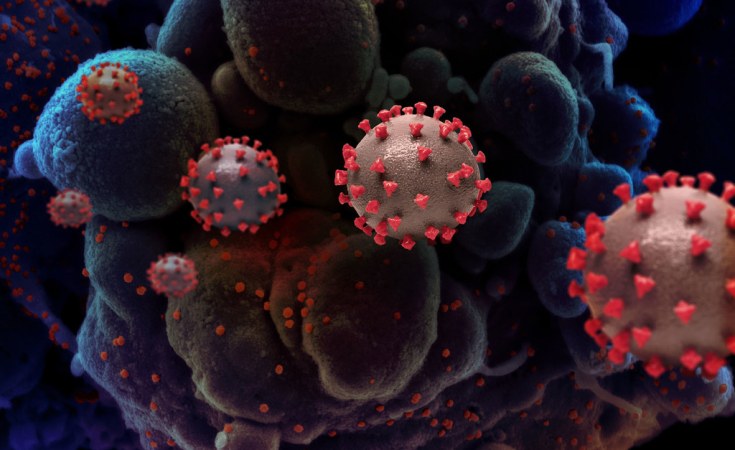COVID stunned the world with an unanticipated pandemic. Now mpox, a disease which originated in animals, has been declared a global public health emergency.
In this edited extract from his new book Fighting an Invisible Enemy, virologist Barry Schoub, the founding director of South Africa's National Institute for Communicable Diseases, looks at how diseases spread from animals to humans.
The introduction of 'new' diseases to humans
Epidemics and pandemics of new diseases arise in two stages. Firstly, the zoonotic spillover event introduces the infectious organism, in the main a virus, into the human population from an animal source.
The second stage involves various factors that could promote the spread of the pathogenic communicable organism throughout the human population.
Zoonotic spillover
A spillover event occurs when a communicable disease agent crosses the species barrier from animals to humans and then gets established in the human population.
This may be the result of humans intruding into remote, isolated wild animal ecosystems, or when wild animals are driven to venture into human habitats or are purposely brought into human environments.
Alien animal viruses entering the human biome
The successful introduction of an alien animal virus into the human population is a rare event.
It's rare because of the need for the virus to attach itself to a very specific receptor site on the cell's surface to initiate infection.
The attachment to the receptor site is highly specific to that virus in much the same way as a key fits a lock. On that rare occasion when the key can fit the lock, the invading virus successfully establishes itself in the host cell and then initiates the infection process.
Inside the cell the virus replicates itself using the machinery of the cell. The progeny virus (a replica of the original) is released from the cell only to infect further cells and repeat the replication process.
The next step is for it to be released from the body to infect another individual and establish a chain of transmission from human to human, which could ultimately lead to an outbreak of a communicable disease.
The behaviour of modern humankind has played a large part in the advent of these new communicable diseases.
The increasing wildlife trading of exotic animals worldwide, both legal and illegal, facilitates an ever-growing wild animal-human interaction. Multiple opportunities for these interactions to take place result from the trade of exotic animals, or as a result of agricultural expansion and deforestation of wildlife habitats, or the preparation and consumption of wild animals for food in the so-called wet markets of the Far East.
The reverse chain of events may occur when wild animals are driven to move out of their established habitats and into those of humans in search of food.
Climate change and new infections
Climate change has emerged as one of the most serious threats to human health - from floods to droughts to extremes of temperature. Climate change also poses a serious indirect threat to human health as a result of habitat destruction and its knock-on effect on communicable diseases in humans. The outbreak of the viral disease Nipah in Malaysia and Singapore in 1998/1999 provides a graphic example of how the combination of environmental destruction and climate change can create the ingredients for new human diseases.
The Nipah virus outbreak involved 276 cases, 106 of them fatal. The natural host of this virus is the fruit bat which lives in the forests of these two countries. A combination of the climatic effect of drought, due to the El Niño event, together with a human element - massive deforestation by large-scale burning of vegetation - created a severe haze, which reduced the flowering and fruiting of forest trees.
Deprived of their natural food source, the fruit bats invaded the cultivated orchards and transmitted the virus to domestic pigs which, in turn, infected humans.
The outbreak was brought under control by the large-scale slaughtering of the local pig population.
New infections
The plagues of antiquity moved slowly because in those days transportation was far slower. In contrast, with modern air travel plagues can now be very easily transmitted from one end of the world to the other within a day or two.
We should not be too surprised that the 21st century has presented us with a number of new communicable diseases. Human-wild animal interactions have been promoted by human activities seriously damaging the natural environment of the planet.
Humans of the 21st century are challenged by these new diseases in much the same way as the Native Americans of the 15th and 16th centuries, who suffered massive population losses from "new" communicable agents brought to their shores by colonising Europeans.
In these so-called virgin soil epidemics the novel organism, being completely new to the population, encounters no resistance from population immunity and is therefore able to spread virtually unhindered.
This is an edited extract from Fighting an Invisible Enemy: The Story of the National Institute for Communicable Diseases, published by Wits University Press (2024).
Barry Schoub, Emeritus professor of virology, Wits University, University of the Witwatersrand


